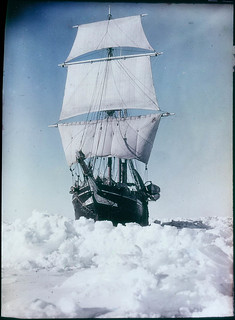Introduction
In 1914, explorer Ernest Shackleton and his crew set sail for Antarctica in a voyage known as the Endurance expedition. This team had the goal of being the first to cross the continent through the South Pole. However, their ship, the Endurance, became trapped in ice in the middle of the sea. The crew was stranded with seemingly no hope of survival. Despite the perilous situation, Shackleton’s leadership kept morale high, and the crew endured months of harsh conditions. When the ship was eventually crushed by ice, they set up camp on the ice. Shackleton made the difficult decision to lead some of his crew members on a daring open-boat journey to seek help. This journey would span over 800 miles of dangerous seas, but in the end, the crew successfully arrived at South Georgia Island. It is here they planned a rescue mission that saved all members of the expedition. Though the original goal was never achieved, the Endurance expedition became a testament to leadership, endurance, and the indomitable human spirit in the face of adversity.
Traits of Leadership Endurance
Leaders are often faced with adversities that challenge their ability to monitor their team members, while not sacrificing themselves in the process. Those who find success during difficulties often have high leadership endurance. Leadership endurance is a leader’s ability to persevere and maintain effectiveness while facing uncertainty and/or challenges. Leaders who possess endurance influence a team’s effectiveness by enhancing their ability to withstand setbacks and being a calming force during troubling times. The catch is that not all leaders have a natural resilient inclination, for some, it is a trait that must be developed.
Developing Leadership Endurance
Leadership endurance is about giving yourself time and experiences to develop. However, there are strategies that can aid in developing leadership endurance:
- Stay true to values: Leaders who know their values, and the values of their organization, have a guiding force. During unstable times, values are a constant and consistent reminder of why we do what we do. Be intentional about reflecting on these values and honoring them in all decisions made when facing challenges. Even when the result of a situation is not ideal, if values are honored, there is integrity. Integrity inspires loyalty amongst team members and is a trait that will often result in leaders being successful. Reflect on what your values are and know your organization’s values.
- Build a support network. Ideal leaders do not isolate, they collaborate. Relying on mentors, coaches, and team members is crucial for leaders to have support and a sense of reassurance with decision-making. Seeking diverse perspectives and feedback allows challenges to be navigated effectively. A support network can also take some of the pressure off leaders. Sometimes a little bit of relief instills hope while developing endurance. Identify people in your life that can be trusted to give sound advice and guidance.
- Develop self-awareness. Understanding one’s strengths, opportunities for improvement, and triggers is foundational to endurance. Leaders who are self-aware can better regulate their emotions, practice self-management, adapt to stressors, and make informed decisions under pressure. Some ways to develop self-awareness include self-reflection, feedback-seeking, completing personality assessments, and mindfulness practices.
Quote: “There can be no turning back. The only way is to go forward.”– Caroline Alexander, author of The Endurance: Shackleton’s Legendary Antarctic Expedition




